Criminal Procedure Analysis: A Case Study of John Doe's Arrest
VerifiedAdded on 2023/06/09
|6
|992
|262
Case Study
AI Summary
This case study examines the criminal procedure surrounding the arrest of John Doe for shoplifting merchandise worth over $1000. It outlines John Doe's rights upon arrest, including the Fifth Amendment assurance against self-incrimination, and the procedures police officers must follow, such as frisking, inventorying personal property, and informing the suspect of their rights. The analysis covers the options available to the court for hearing the case, including a preliminary hearing and a grand jury proceeding, detailing the processes and differences between them. Furthermore, it addresses factors the judge considers when setting bond, such as the seriousness of the crime, the suspect's criminal record, and potential flight risk. The study concludes with an overview of the arraignment process, where the charges are read, and the suspect pleads guilty or not guilty, with the judge determining bail eligibility. Desklib provides access to similar case studies and study resources for students.
1 out of 6
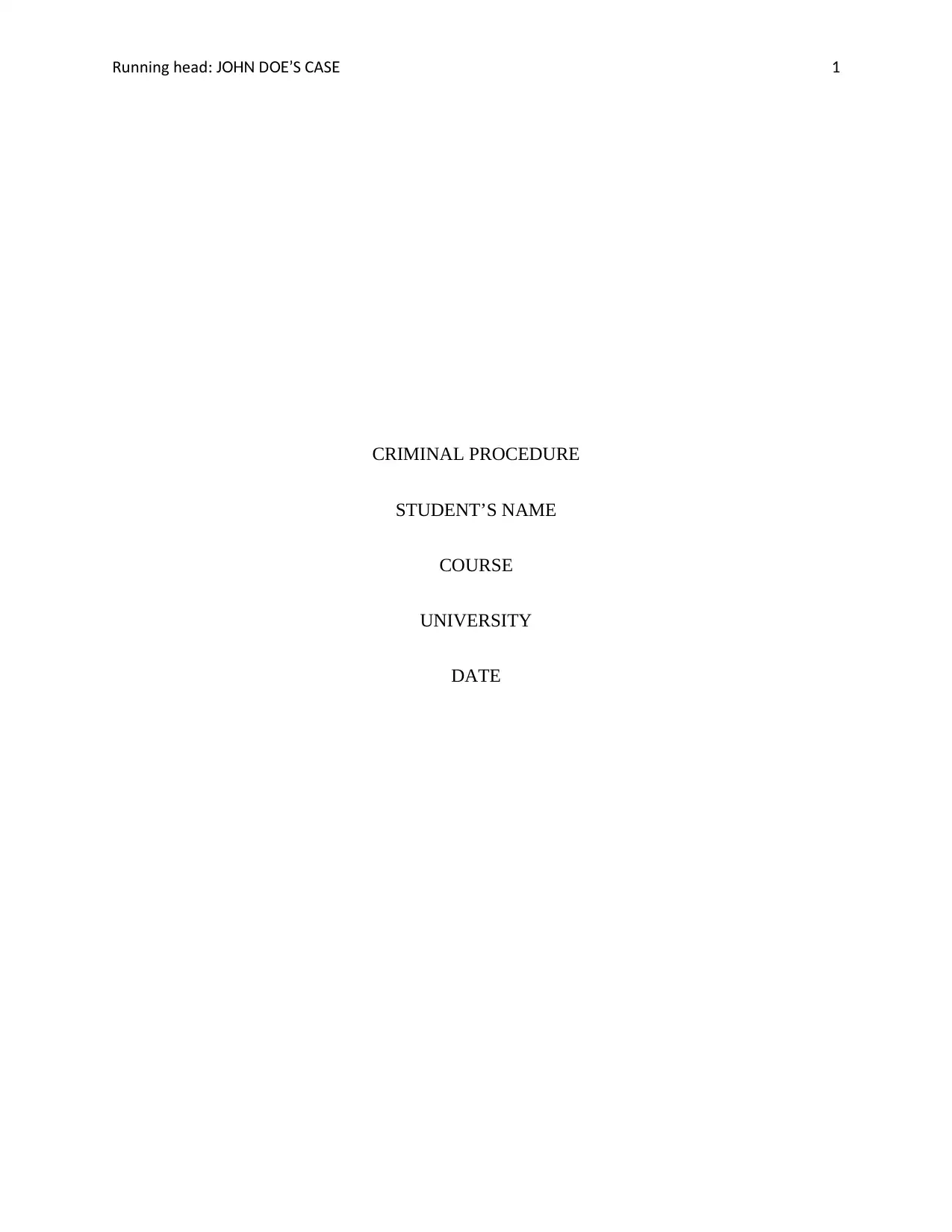
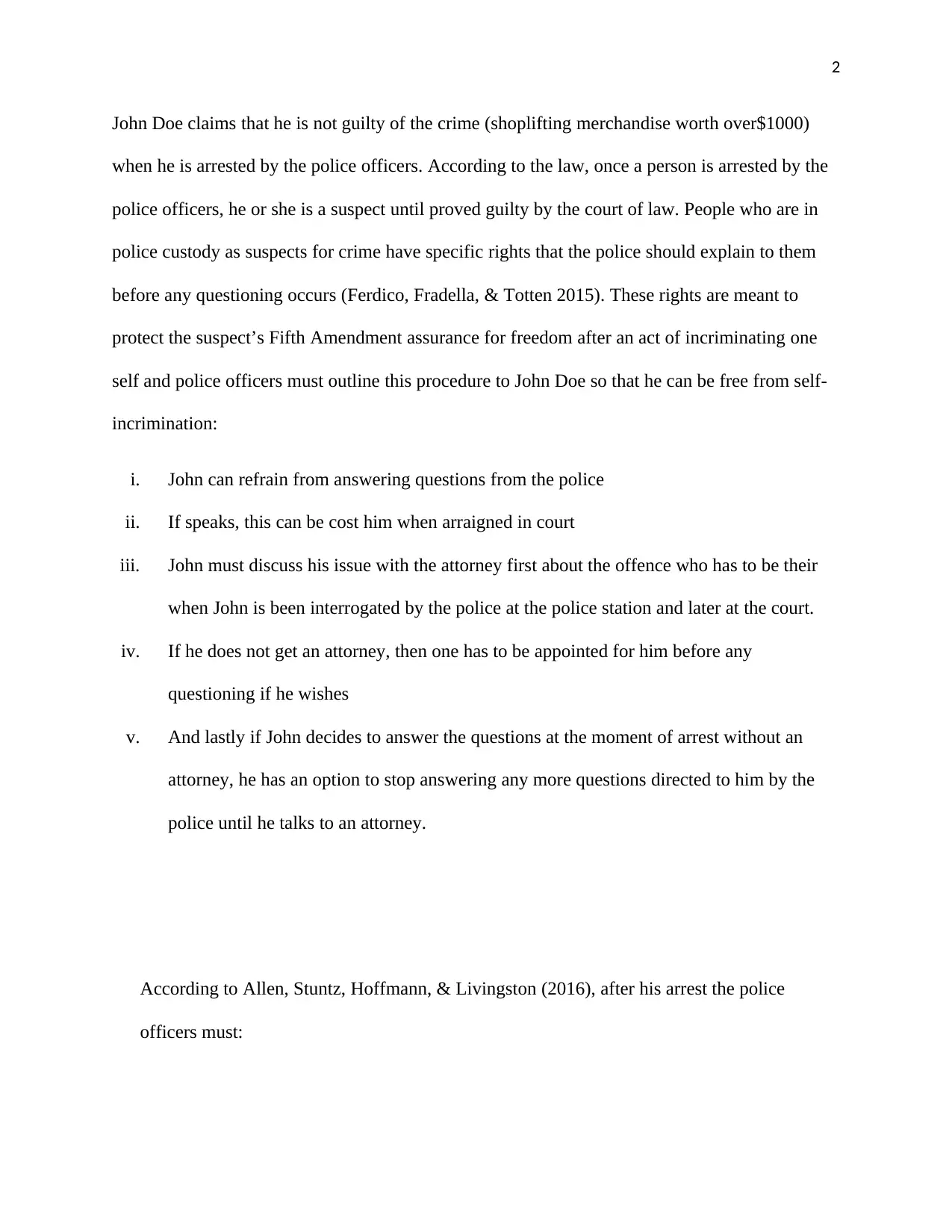
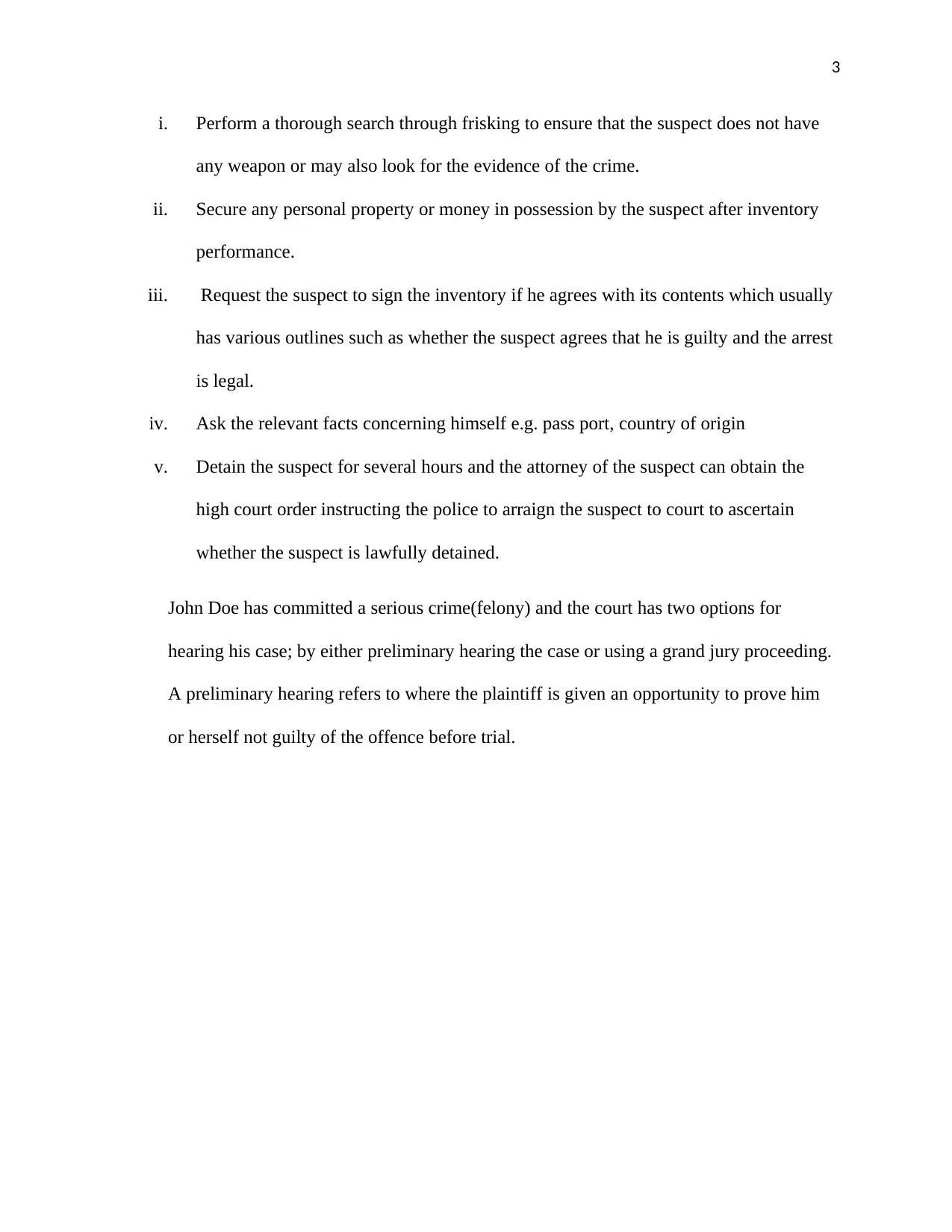

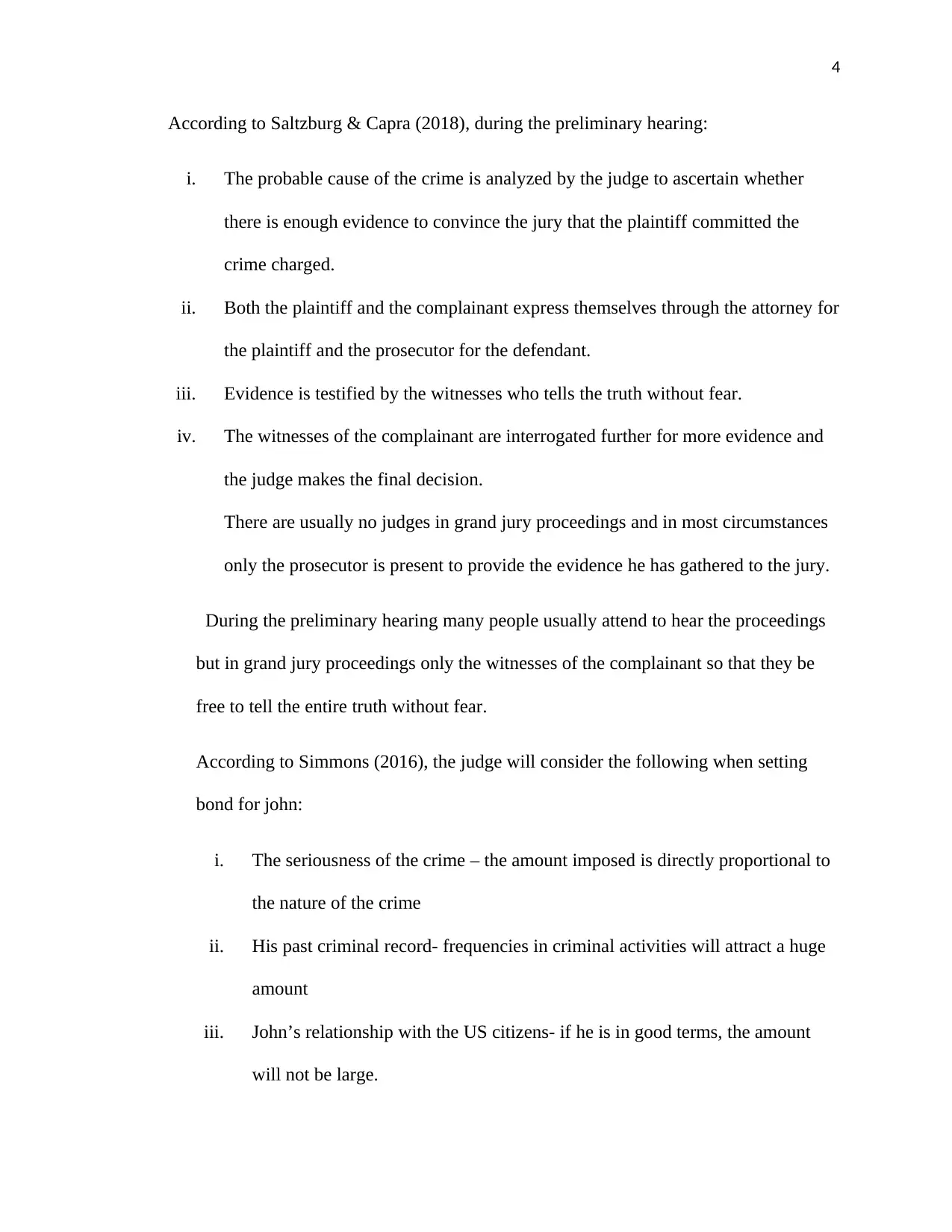
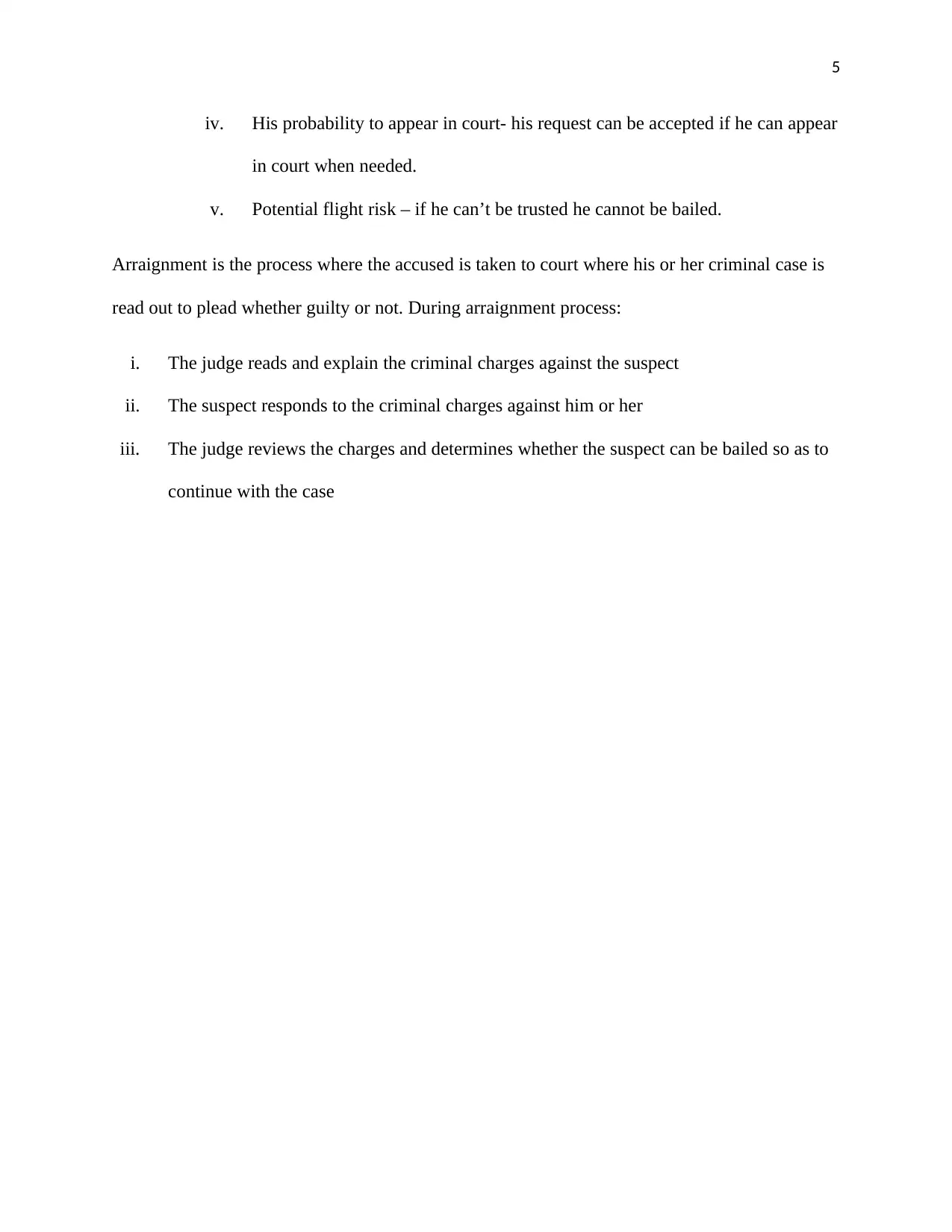
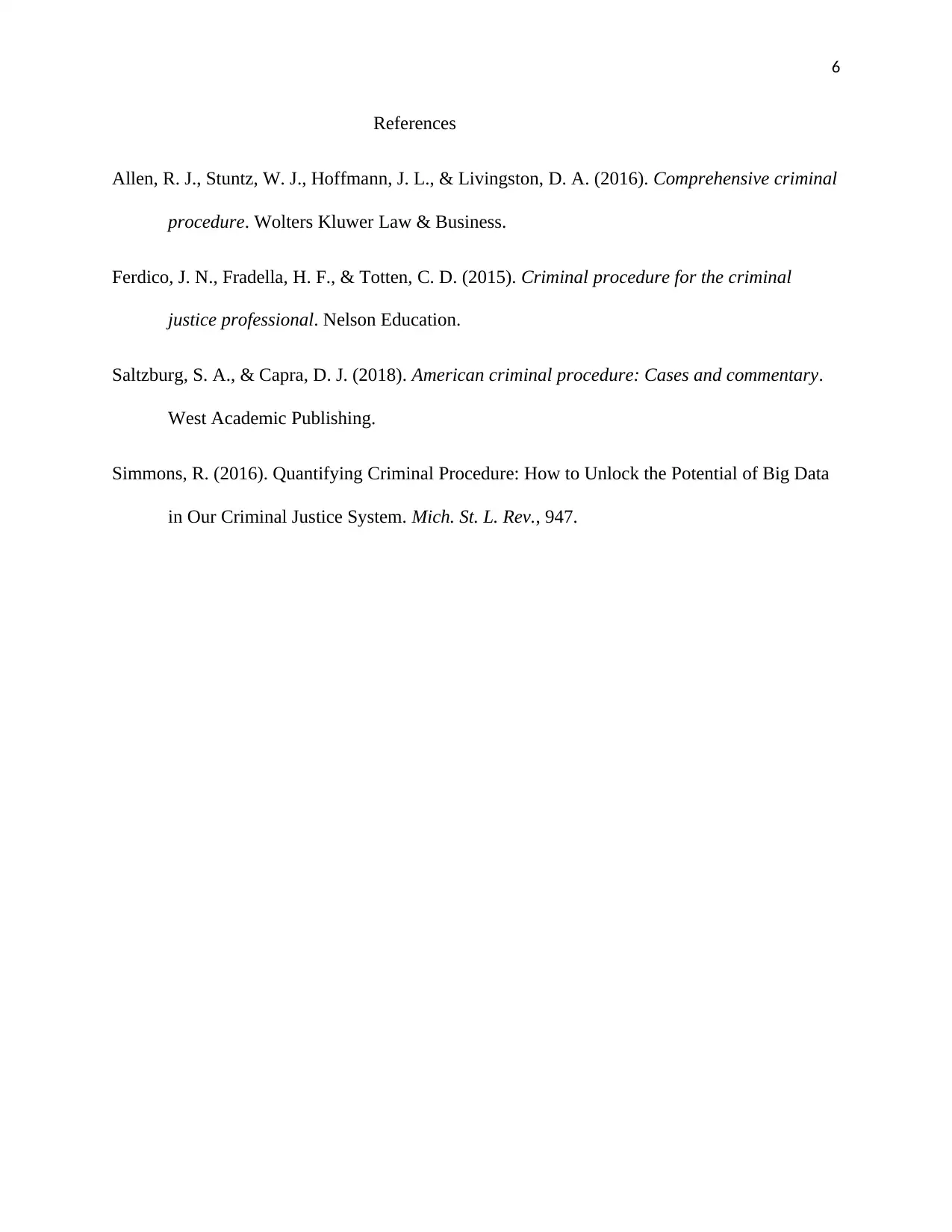


![University Law Case Study: R vs. Smith [2003] QCA 76](/_next/image/?url=https%3A%2F%2Fdesklib.com%2Fmedia%2Fimages%2Fci%2F394dee3982ef454f9e4a28ed0b06d045.jpg&w=256&q=75)



![[object Object]](/_next/static/media/star-bottom.7253800d.svg)